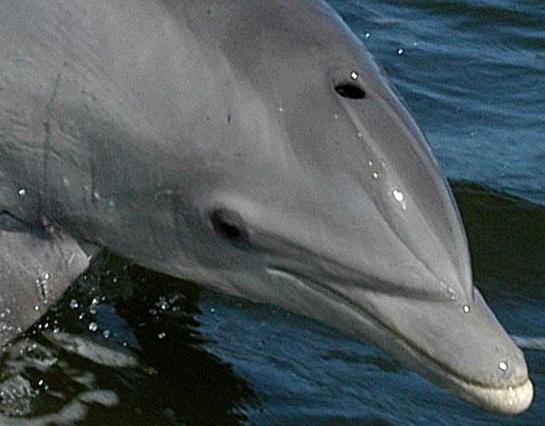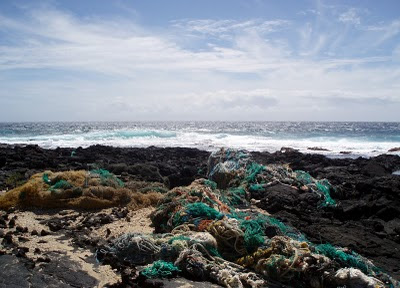by B. N. Sullivan
Here in Hawaii, the drama began on Friday evening, Feb. 26, 2010, while I was watching the Olympics on television. As is usually the case when I watch TV in the evening, my mini netbook was on my lap, and I was playing a game on it. In addition to the game, I had Twitter open in my browser -- not wanting to miss anything that might be happening somewhere in the world. (I admit it: I'm a breaking news junkie!)
At exactly 8:36 PM Hawaii time, I saw the first mention on Twitter of a huge earthquake off the coast of Chile. The first report said the magnitude was estimated to be 8.3. A few minutes later, that estimate was changed to 8.5, and a tsunami warning was issued for Chile and Peru. Roughly an hour after that, the magnitude of the quake was upped to 8.8, and it was announced that a tsunami had indeed been generated.
That was it for me. I had no further interest in my game, the Olympics, or anything else on TV, save for the news. I watched the story develop on TV and on the Web until about 3 AM, when I could stay awake no longer. But by that time I knew that a tsunami was headed across the Pacific; that an official tsunami warning had been issued for Hawaii; that coastal evacuations would begin at 6 AM; and that the tsunami was projected to reach Hilo minutes after 11AM on Feb. 27. Believing (correctly, it turned out) that most of my family members and friends on the Big Island already were asleep when the tsunami warning was initiated, I sent tweets and emails to them to give them a heads up about what we all would face when morning came.
Promptly at 6 AM -- right on schedule -- the civil defense sirens along the coast began to wail their warning to those who lived in
inundation zones to prepare to evacuate. The sirens warbled again, each hour on the hour, until 10 AM when roads along the coast, as well as those that led into and out of the inundation zones were closed. Coastal evacuees traveled inland and upslope; vessels left the harbors and went far out to sea to wait in open water; some small craft were trailered inland for the duration.
We sat tight at our house, not needing to evacuate since we live on a hill at an elevation about 500 feet above sea level. At 10:30 AM the final warning siren sounded. I have to admit, it was a bit nerve-wracking.
We watched live coverage of the scene at Hilo Bay. Everyone was nervous. After all, the epicenter of the present quake was very near that of another great quake in 1960, which generated a
tsunami that wiped out much of downtown Hilo and claimed 61 lives. In addition, people of our era have seen vivid images of the
Boxing Day Tsunami that followed a huge earthquake off the coast of Sumatra on Dec. 26, 2004, which swept across the Indian Ocean, killing hundreds of thousands of people. All of this was on our minds, but no one knew exactly what to expect.
The predicted time of arrival for the tsunami came and went. The webcam trained on Hilo Bay showed calm water, under a clear blue sky. Several minutes later, however, the water began to flow out of the harbor into the bay. As the water receded, the surface roiled, there were ribbons of foam, and the color of the water changed radically from transparent blue to a very muddy, opaque brown. Rocks and reeftops that had been submerged were now bared for a moment. Then the water surged back toward the shore.
This cycle was repeated at least six or seven times over the next hour and a half or so, and indeed, officials have said that smaller, less noticeable (to casual observers) surges continued for many hours. When the tsunami warning was lifted, just before 2 PM, evacuees were allowed to return to their homes and businesses along the coast, but the beach parks remained closed. Everyone was warned not to venture into the ocean, due to the possibility of unpredictable and potentially strong currents.
In Hilo Bay, the largest surge turned out to be just over one meter high. There was no breaking wave, but the surge did wash over the breakwater, and briefly covered a dock in the harbor. Although we did not witness it, we heard reports that the tsunami swelled into the mouths of the two rivers that empty into Hilo Bay, surging upstream and turning the river waters very muddy. As the mass of sea water pushed into the rivers, it uprooted vegetation along the river banks, and carried it back out to sea, along with rocks and other debris from the river bottoms. Fortunately, though, the surge was insufficient to cause it to overflow the bay and the harbor to an extent that caused damage. Hilo was spared, and so were all the other coasts of the Hawaiian Islands.
We don't have tsunami alerts very often, and the number of times a tsunami has reached our shores is relatively small. Still, there have been several instances in which a tsunami large enough to do damage did come ashore in Hawaii, did cause destruction, and did cause injury and loss of life. Island residents take tsunami alerts very seriously.
We have warning sirens on all of our coasts, and people know that when the sirens sound, they should immediately head inland and/or upslope and ask questions later! Indeed, during yesterday's event, there were no reports of people who did not cooperate with the evacuation order.
For more information about the tsunami hazard in Hawaii, visit the
Pacific Disaster Center's Tsunami page. For tsunami alerts and data, visit the Web site of the
Pacific Tsunami Warning Center, where you can also sign up for email alerts or subscribe to an RSS feed that will bring you alerts in real time.

BNSullivan.jpg)

BNSullivan.jpg)
BNSullivan.jpg)
BNSullivan.jpg)
BNSullivan.jpg)
BNSullivan.jpg)
BNSullivan.jpg)
BNSullivan.jpg)
BNSullivan.jpg)
BNSullivan.jpg)
BNSullivan.jpg)
BNSullivan.jpg)
BNSullivan.jpg)
BNSullivan.jpg)
BNSullivan.jpg)
BNSullivan.jpg)
BNSullivan.jpg)
BNSullivan.jpg)
BNSullivan.jpg)


BNSullivan.jpg)
BNSullivan.jpg)
BNSullivan.jpg)
BNSullivan.jpg)

BNSullivan.jpg)
BNSullivan.jpg)
BNSullivan.jpg)
BNSullivan.jpg)
BNSullivan.jpg)

